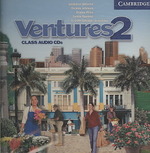Full Description
Tested in hundreds of classrooms, this text is a student favorite that brings eight classical models of decision making to life, creating useful tools in developing strategies to solve real-life problems.
The frameworks include; classical, administrative, incremental, mixes scanning, political, and garbage can models as well as two models of shared decision making. After illustrating the use of these decision-making models to analyze and develop solution strategies, students have the opportunity to explore about fifty actual cases to build their own analyses and solution strategies.
New, contemporary cases have been added to this edition throughout the text as well as a final chapter that encourages cooperative learning by incorporating a comprehensive case study to be handled as a group project.
Contents
<> Preface
Chapter 1: Introduction
Case Method: An Historical Perspective
Rationality and Decision Making
Rationality and Values
Rationality and the Environment
Rationality and the Unexpected
Mindful Decision Making: Reflective, Not Mechanical
Chapter 2: Decision Making: Optimizing and Satisficing
The Classical Model: An Optimizing Strategy
The Administrative Model: A Satisficing Strategy
Decision-Making Process: A Cyclical Process
Case 2.1 The Teachers Council
Analyzing the Case: Using the Satisficing Model
Case 2.2 Controversial Speaker
Chapter 3: Decision Making: Muddling and Scanning
The Incremental Model: A Strategy of Successive Limited Comparisons
Case 3.1: Conflict at Christmas
Analyzing the Case: An Incremental Approach
The Mixed-Scanning Model: An Adaptive Strategy
Analyzing the Case: An Adaptive Strategy
Summary and Conclusion
Case 3.2: Crisis in Marshall Creek
Chapter 4: Decision Making: Garbage and Politics
The Garbage-Can Model: Irrational Decision Making
Case 4.1: Critical Friends Groups
Analyzing the Case: Garbage-Can Model
The Political Model: Personal Rationality
Case 4.2: Divided Loyalties
Analyzing the Case: The Political Model
Summary and Conclusion
Case 4.3: Politics at River Grove
Chapter 5: Using the Best Model: Practice Cases
Decision-Making Models: A Comparison
The Best Model: A Contingency Approach
A Contingency Mode: Matching Strategy with Situation
Applying the Appropriate Model
Decision Making: A Practical Tip
Case 5.1: Freak Dancing
Case 5.2 Sexual Harassment
Case 5.3: Late Again
Case 5.4: Excessive Force?
Case 5.5 Discord and Disharmony
Case 5.6: Superintendent's Hiring Dilemma
Case 5.7: Electives
Case 5.8: Sour Notes
Case 5.9: Zero Tolerance Policy: The Eagle Scout
Case 5.10: The Slap
Case 5.11: Low Expectations, Poor Performance
Case 5.12: Kinky Hair
Case 5.13: The Reluctant Assistant
Case 5.14: The Setup
Case 5.15: Dropped for a Loss
Chapter 6: Shared Decision Making: A Comprehensive Model
Managing Participation: Enhancing Quality and Acceptance
Decision Making Styles
Decision Making Trees
Case 6.1: The Curriculum Dilemma: A Group Problem
Analyzing the Case: The Curriculum Dilemma
Individual Problems
Case 6.2: The Secretary's Office: An Individual Problem
Analyzing the Case: The Secretary's Office
Summary and Cautions
Case 6.3: The Parking Lot
Chapter 7: Shared Decision-Making: A Simplified Model
Zone of Acceptance
Participation
Directing Participation: Administrative Roles
Using the Model
Case 7.1: The Curriculum Dilemma: A Group Problem Revisited
Analyzing the Case: The Curriculum Dilemma
Discussion: A Preference for Action
Case 7.2: The Secretary's Office: An Individual Problem Revisited
Analyzing the Case: The Secretary's Office
A Comparison
Another Application
Case 7.3: Computer Purchasing Problem
Analyzing the Case: A Theory-Driven Student Analysis
Summary and Cautions
Case 7.4: Teacher Tardiness
Chapter 8: Decision Making: Final Cases
Subordinate Participation: A Comparison
Which Model?
Case 8.1: Administrative Communication
Case 8.2: Principal's In-Service
Case 8.3: Parent Complaint
Case 8.4: The Hiring Problem
Case 8.5: The Advisory Council
Case 8.6: Student Athletes
Case 8.7: Subversive Web Page
Case 8.8: Grading Policy
Case 8.9: Honest Reporting
Case 8.10: Double Entendre
Case 8.11: Special Education
Case 8.12: Just Change It
Case 8.13: Appropriate Attire
Case 8.14: Professional Dilemma
Case 8.15: Intellectual Property
Case 8.16: Grade Change
Case 8.17: The Staffing Problem
Case 8.18: New Department Chair
Case 8.19: Assistant Dean
Case 8.20: The Dean's Advisory Council
Chapter 9: Putting it All Together
Case 9.1: Redistricting
Suggestions for a Group Project
Other Suggested Activities
Bibliography
Index







